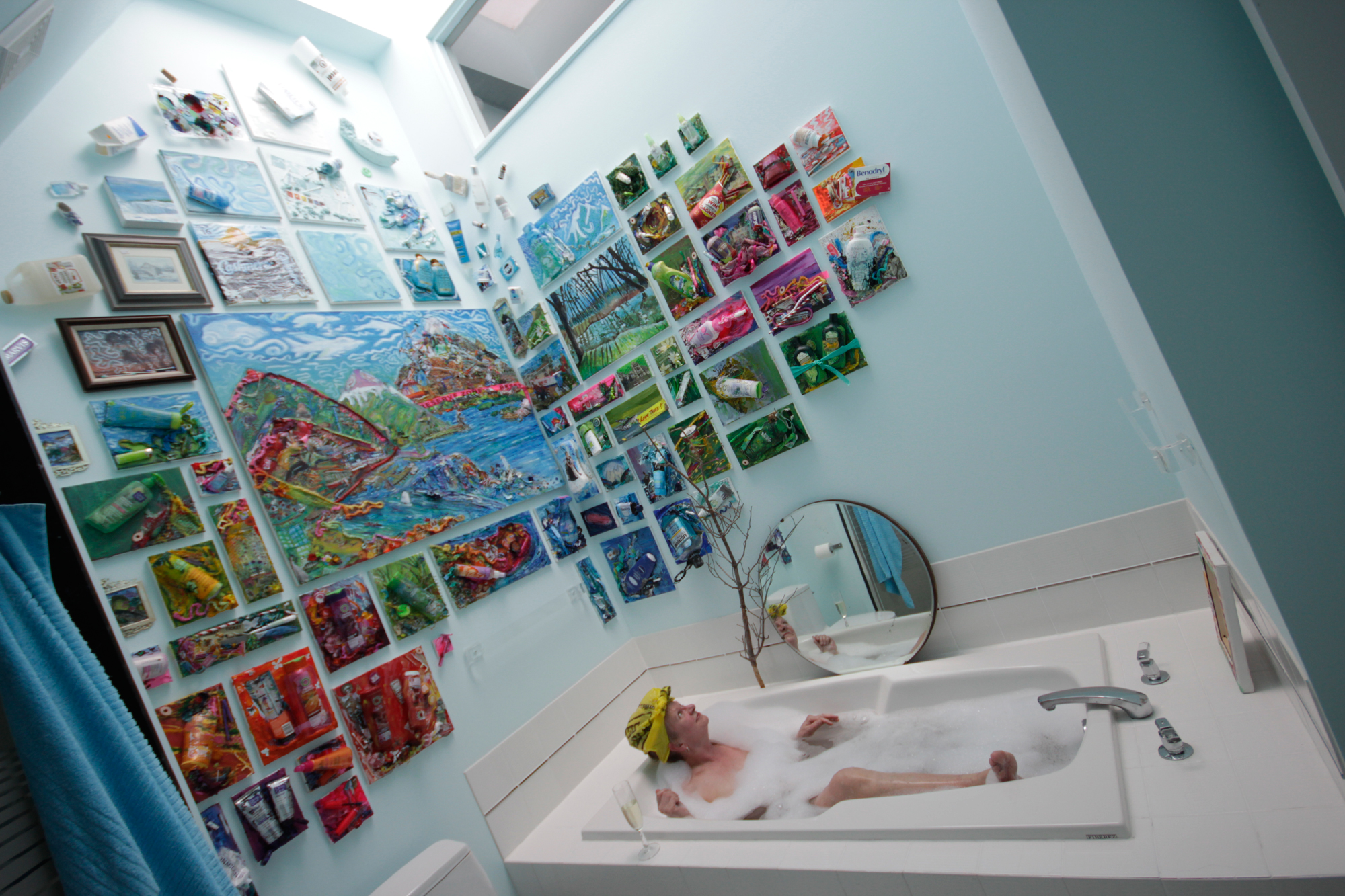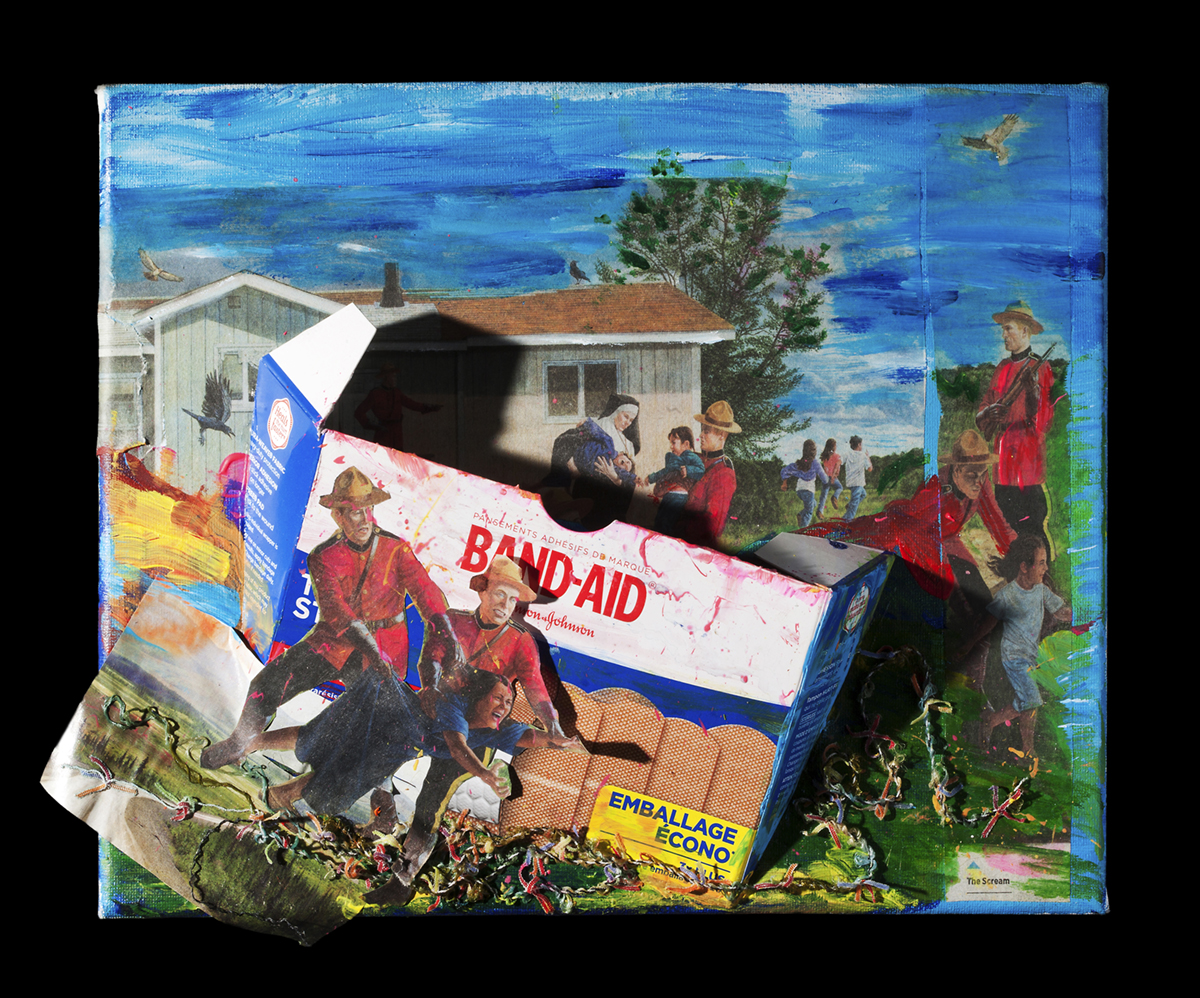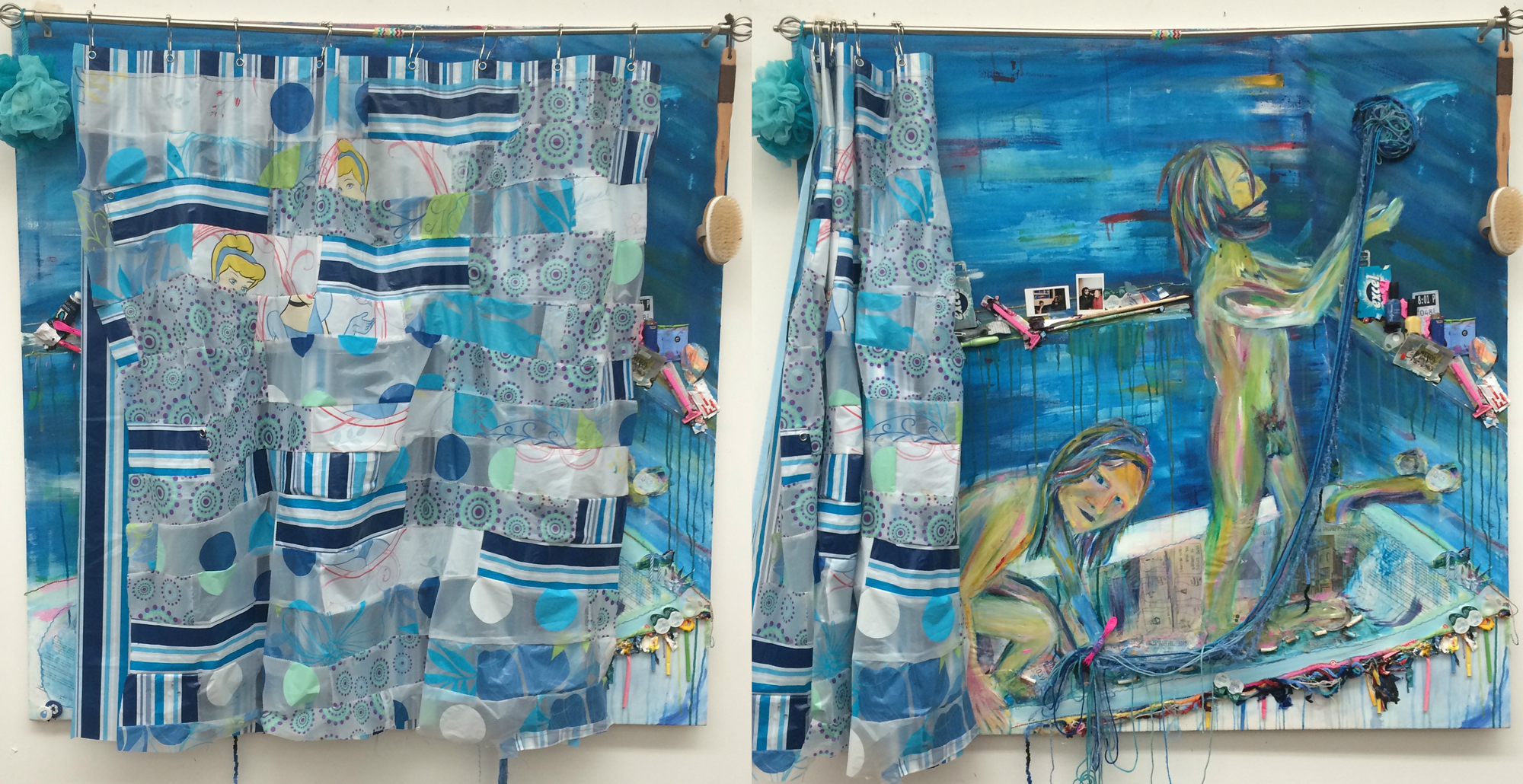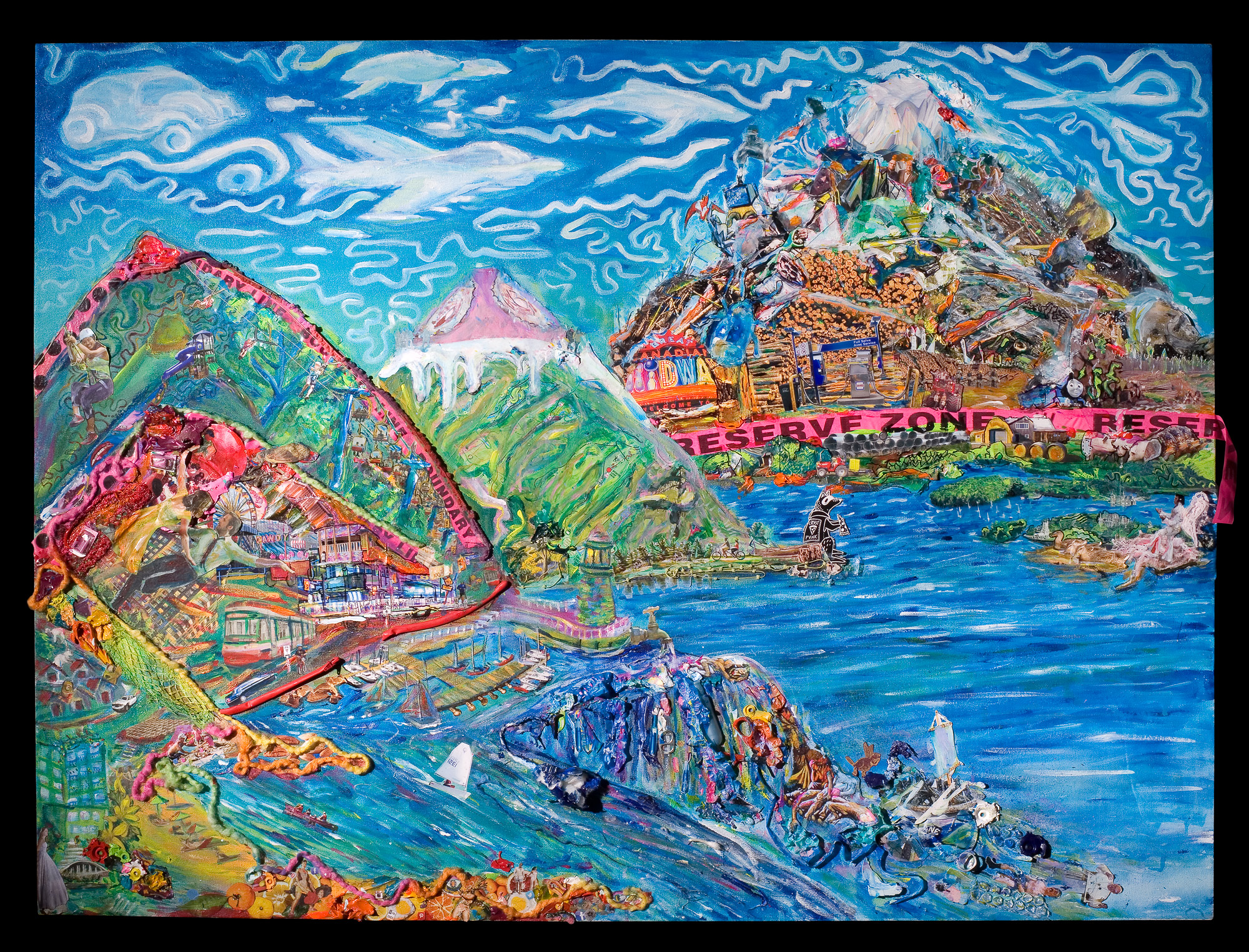03.10.17 - Q&A: recent gradute of the Bachelors of Arts, Visual Studies program Chantal Hassard
It’s not often that a graduate of the Bachelors of Arts, Visual Studies has the opportunity to create an installation for their professor’s bathroom, but Chantal Hassard did just that earlier this year. Professor Joanne Tod had taken a liking to Hassard’s MOOP (Matter Out of Place) artwork, and invited her to create the installation with the desire to have “bottles tumbling down from the skylight.” Since graduating, Hassard started b[art]er (an artist exchange network), exhibited work at Honest Ed’s Farewell Festival, and was profiled by Narcity as one of “14 Toronto Artists To Follow On Instagram If You Want To Be Inspired.” Honours Bachelor of Arts in Architectural Studies student Josie Northern Harrison (HBA 2017) met up with Hassard to chat about her recent initiatives within the artist community, her experience saying goodbye to one of Toronto’s landmark buildings, and how counter-cultural communities have inspired her work.
While you were studying, did you take part in any opportunities at U of T that changed your perspective on art?
My perspective on art really changed when I did a semester abroad in Tel Aviv with U of T’s Centre for International Experience. While studying Political Science and travelling, I stumbled into the Isreali Burning Man community, which organizes Midburn, the third largest Burning Man offshoot event worldwide. I knew Burning Man was a self-sufficient artist community, and I wanted to explore their ideas. I got involved by volunteering with the Department of Public Works to go into the Negev desert to install infrastructure for the temporary city.
The immersive environment really expanded my understanding of how art affects viewers. It was eye-opening to watch large scale installations be built and celebrated, only to be lit on fire and destroyed later on. The counterculture ideology of radical inclusion — the idea that everyone should be welcome — seemed especially valuable in an exclusive state like Israel.
How did you continue your art practice after you graduated?
After graduating from the Visual Studies program, I initiated b[art]er, an artist exchange network, to recreate a setting where people could engage with each other through art. Anyone can bring anything they made to trade with other artists. By exchanging work, participants invest in each other. There is so much rejection in the world, so I hope that b[art]er can be a place where people might try things they’ve never done before just for fun.
I also gallery sit, help install shows, and bartend at Northern Contemporary, an illustration gallery in Parkdale. There is a lot of experimentation going on there, and I can test ideas like b[art]er in the space. I am volunteering in exchange for a show of my own, so I am making work with that in mind now.

Out Home and Native Land by Chantal Hassard, 2017.
It seems like you have a really good relationship with Joanne Tod; has she been a mentor for you?
Yeah, totally. Joanne Tod was my professor during my final semester at U of T. In undergrad courses, I was formally introduced to postmodernism through her figurative work from the 80’s, so I made it a priority to take her painting course. I was new to painting and had hoped to learn some technical skills, but ended up really connecting to Joanne through our shared appreciation for social commentary. At the same time, she advised my Visual Studies thesis course, so she saw how my far-out ideas could hang together. After I graduated, she invited me to extend a series called MOOP — the Burning Man word for garbage, or Matter Out Of Place — in the bathroom of her home. She is a total rockstar, and her support has had a profound effect on my own confidence as an artist.
For the installation in her bathroom, I made Our Home and Native Land (2017). I wanted to acknowledge Canada’s 150th year by creating a nauseating archive of material and cultural consumption that highlights the exploitive relationship our society has with the natural world. I was very inspired by and wanted to highlight the references associated with a tree branch in Joanne’s bathroom from Byng Inlet where Tom Thomson’s painted his iconic White Pines. The branch inspired her artwork Divided Touch (2010), and in an interview with The Walrus (http://walrusmagazine.com/rbc/2010.11/) she describes how impressionists conceptualized their use of unmixed dabs of paint so that colours could be brightened by association. I see the same principle at play in the branding of many products; bright colours create recognition with consumers. To create the installation, I spent a year assembling female bathroom products together with personal photography, materials from tree planting, many cutouts of works by Joanne and many other artists working in Canada who influence me. I assembled all these objects together onto a series of canvases that all had their own dominant colour based on the packaging. Each canvas acts like an impasto brush stroke to paint a hysterically realistic defragmenting landscape that tumbles down from the skylight above her bathtub.

MOOP by Chantal Hassard, 2016.
I made an installation called “Good Buys!!” Gone. Bye. (2017). Another Visual Studies graduate, Max Suillerot (BVS 2016) was curating part of An Honest Farewell, an initiative by The Centre for Social Innovation and Toronto for Everyone to say goodbye to the iconic store. Max was familiar with my work, so he invited me fill a Bloor street window vitrine with all the objects he had seen overflowing out of my bedroom turned studio. I showcased what I’d been working on for Joanne’s bathroom with old dusty hand painted signs that I found while dismantling Honest Ed’s old shelving units in preparation for the Farewell Party. It was meant to look like a sale display.

Band-Aid Solution by Chantal Hassard, 2016.
Do you have any advice for incoming students?
Get out there! Volunteer for events that interest you. Go on an exchange. Go to galleries. Submit to shows. Take all kinds of classes. Follow your intuition and definitely don’t waste time being intimidated or wishing you were done studying — it will all be over before you even know what happened.
Image, top (in order of appearance):
Februus by Chantal Hassard, 2016.
Reserve Zone by Chantal Hassard, 2017.
Detail of MOOP by Chantal Hassard, 2016.
Detail of MOOP by Chantal Hassard, 2016.





